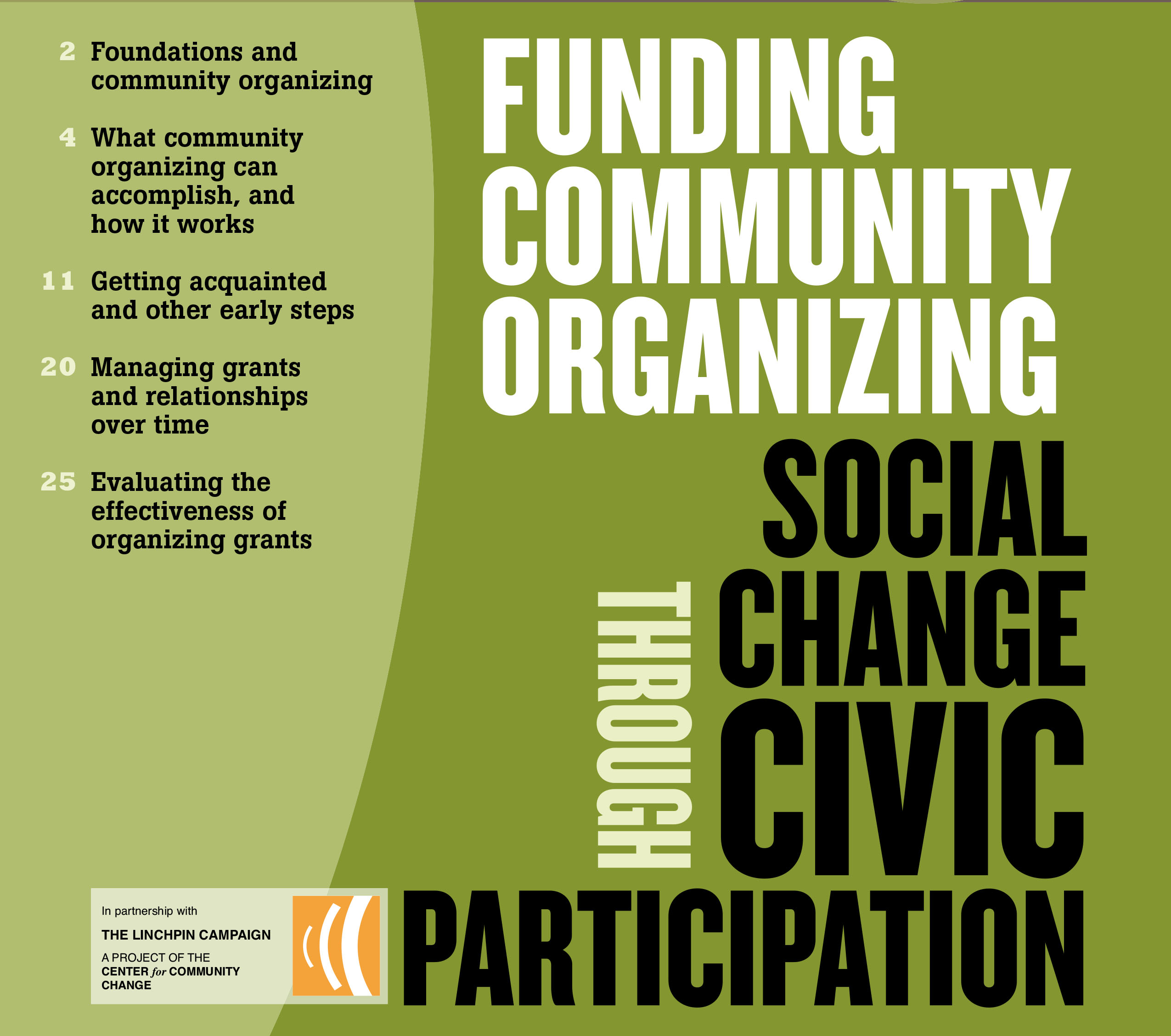Benefits of Community Organizing
To accomplish its aims, community organizing groups use well-defined, deliberate ways of working that are well-aligned with the objectives they seek:
- High level of public engagement, often by people from marginalized groups. Community organizing “can build a sense of dignity, restore people’s sense of significance, relevance. During site visits, community members often tell us, ’What I do can matter.’”
- Cohesion on Important Issues. More and more, organizing groups are learning to build alliances across lines of race, ethnicity, class, and age group, recognizing the greater strength those alliances can bring to communities. Funders have provided support for alliances between groups working with African Americans and immigrants, youth and elderly, and low-income inner city residents and middle class people in a broader metropolitan area.
- Leadership with an authentic following. Organizing groups make it a priority to develop community leaders from among their members. They are devoted to learning through training, learning through action in the community, and follow-up reflection. “It really makes well-rounded persons who enter into public life in their communities, and are respected and trusted spokespersons accountable to their communities."
- Pragmatic solutions that come from the community. “Organizing comes up with innovation that wouldn’t occur from outside of the community that’s involved,” said a foundation president. A program officer told of a group she funded that organized low-income African American and immigrant women following the passage of federal welfare reform legislation. The mayoral administration “had put in place a very punitive system” that made access to benefits as difficult as possible. The workfare program had people sitting “around somebody’s office so they could send you out for coffee or make you do some photocopying four or five hours a day in order to get your welfare check. People were trying to push for real jobs and real job training instead of this makeshift stuff.” When workers were placed in public parks to clean up, the group organized protest actions and collected surveys demonstrating “that the public actually thought that they should be paid like regular park workers instead of working off their welfare grants at less than the poverty rate.” Members were very good at using the press to demonstrate broad public support, “and so they got 900 or 1,000 jobs that were paid at $9 an hour, like the park workers.” Even so, the adminis- tration remained very hostile toward the group. Later, when a new mayor was elected, members were invited in to “talk about how to improve the employment training programs. They got a seat at the table, the community was represented, and they could put forth their ideas.”
- Greater accountability on the part of public officials. A former program officer at a private, regional philanthropy spoke of a general support grant to a local organizing group. “They were pursuing several issues, but improving education was one of the most important to their members. At the time, the mayor and the school superintendent were publicly at odds with each other, not speaking. The organizing group held a large rally, with hundreds of people, inviting both officials. One of the ’asks’ was that the mayor and superintendent begin having regularly scheduled meetings. Both officials agreed, the meetings were held, and the public tension was diminished.”
- Attention to how policies are implemented. It’s often about the way systems work, more than it is about an actual policy.
Takeaways are critical, bite-sized resources either excerpted from our guides or written by Candid Learning for Funders using the guide's research data or themes post-publication. Attribution is given if the takeaway is a quotation.
This takeaway was derived from Funding Community Organizing.

